Free Software often has no Warranty
페이지 정보

본문
 Also, since the blobs are undocumented and may have bugs, they pose a security risk to any operating system whose kernel includes them. The SELinux project at the United States National Security Agency is an example of a federally funded free-software project. The FSF list is not prescriptive: free-software licenses can exist that the FSF has not heard about, Software development eBooks or considered important enough to write about. Selling software under any free-software licence is permissible, as is commercial use. Freedom 0: The freedom to use the program for any purpose. Freedom 2: The freedom to redistribute and make copies so you can help your neighbor. Free software can be a for-profit, commercial activity or not. The loan adjective "libre" is often used to avoid the ambiguity of the word "free" in the English language, and the ambiguity with the older usage of "free software" as public-domain software. The numbering begins with zero, not only as a spoof on the common usage of zero-based numbering in programming languages, but also because "Freedom 0" was not initially included in the list, but later added first in the list as it was considered very important.
Also, since the blobs are undocumented and may have bugs, they pose a security risk to any operating system whose kernel includes them. The SELinux project at the United States National Security Agency is an example of a federally funded free-software project. The FSF list is not prescriptive: free-software licenses can exist that the FSF has not heard about, Software development eBooks or considered important enough to write about. Selling software under any free-software licence is permissible, as is commercial use. Freedom 0: The freedom to use the program for any purpose. Freedom 2: The freedom to redistribute and make copies so you can help your neighbor. Free software can be a for-profit, commercial activity or not. The loan adjective "libre" is often used to avoid the ambiguity of the word "free" in the English language, and the ambiguity with the older usage of "free software" as public-domain software. The numbering begins with zero, not only as a spoof on the common usage of zero-based numbering in programming languages, but also because "Freedom 0" was not initially included in the list, but later added first in the list as it was considered very important.

Nevertheless, software licensed under licenses that do not meet the Free Software Definition cannot rightly be considered free software. Levi, Ran. "Richard Stallman and The History of Free Software and Open Source". All open-source licenses must meet the Open Source Definition in order to be officially recognized as open source software. Some non-software industries are beginning to use techniques similar to those used in free software development for their research and development process; scientists, for example, are looking towards more open development processes, and hardware such as microchips are beginning to be developed with specifications released under copyleft licenses (see the OpenCores project, for instance). Some free software is developed by volunteer computer programmers while other is developed by corporations; or even by both. The right to study and modify a computer program entails that the source code-the preferred format for making changes-be made available to users of that program.
From the 1950s up until the early 1970s, it was normal for computer users to have the software freedoms associated with free software, which was typically public-domain software. Creative Commons and the free-culture movement have also been largely influenced by the free software movement. Debian does not publish a list of approved licenses, so its judgments have to be tracked by checking what software they have allowed into their software archives. They generally advocate permissive free software licenses, which allow others to use the software as they wish, without being legally forced to provide the source code. Free software business models are usually based on adding value such as customization, accompanying hardware, support, training, integration, or certification. However, unless the applications' licenses are compatible, combining programs by mixing source code or directly linking binaries is problematic, because of license technicalities. However, with version 0.12 in February 1992, he relicensed the project under the GNU General Public License. Software that is not covered by copyright law, such as software in the public domain, is free as long as the source code is also in the public domain, or otherwise available without restrictions.
- 이전글흥신소 의뢰비용과 업무, 체크리스트 한번에 알아보자 25.04.16
- 다음글대전흥신소 배우자 바람 합벅적으로 증거수집 25.04.16


